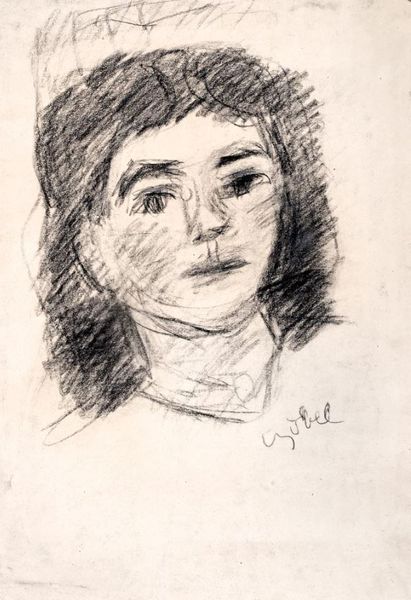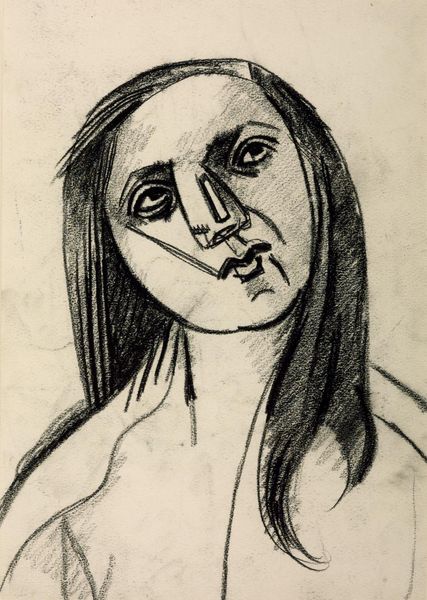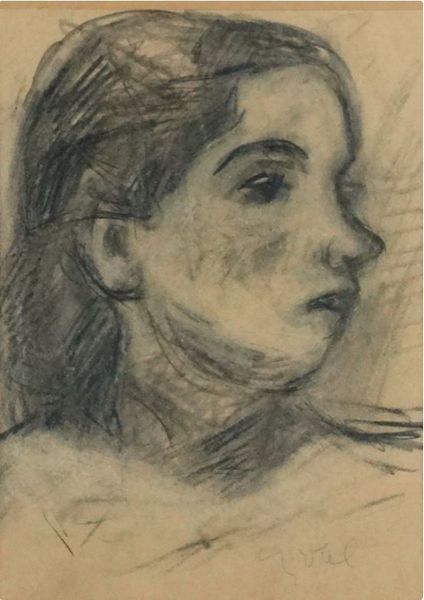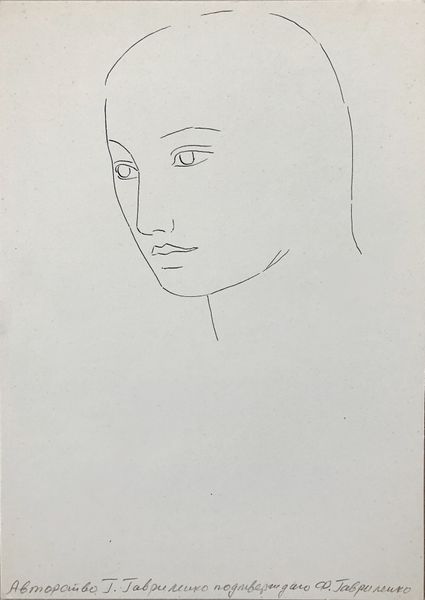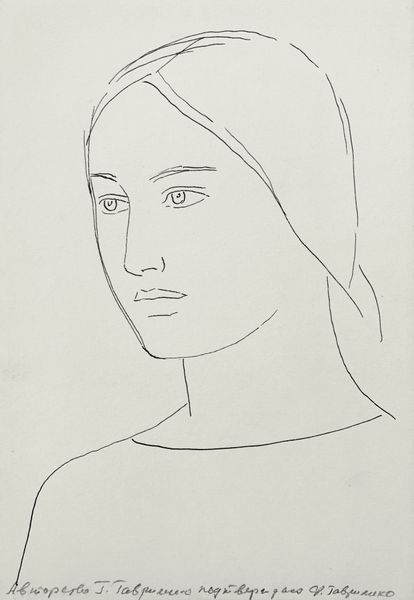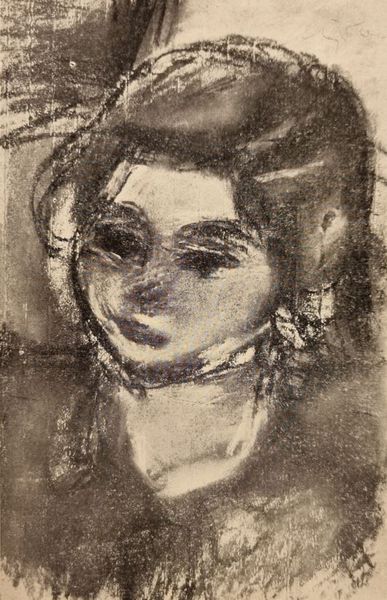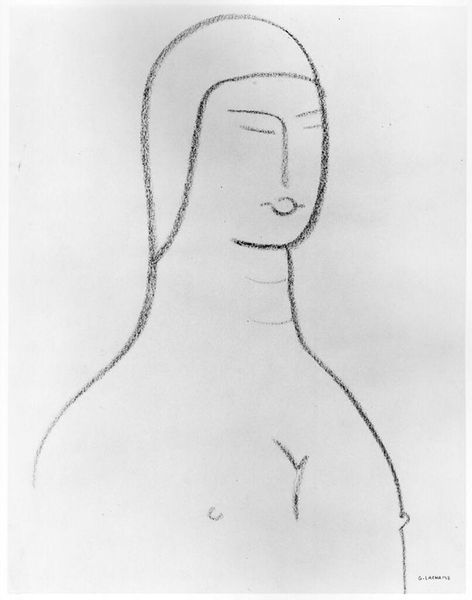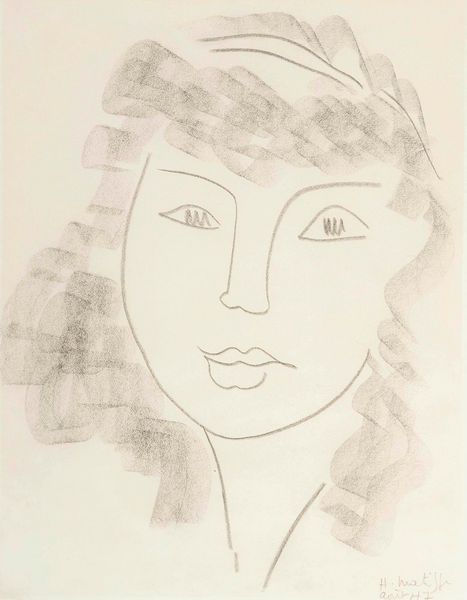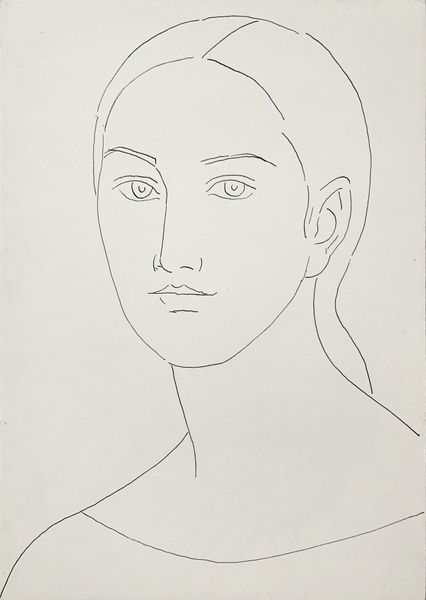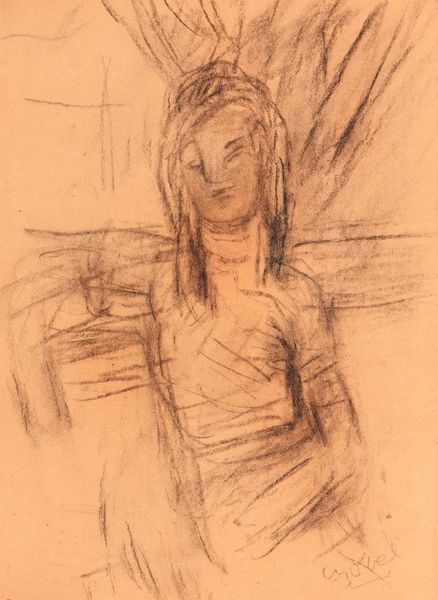
drawing, pastel
#
portrait
#
drawing
#
figuration
#
sketch
#
expressionism
#
line
#
portrait drawing
#
pastel
#
modernism
Copyright: Public domain US
Curator: Looking at this sketch, I feel immediately drawn in by the direct gaze and subtle vulnerability it conveys. The lack of detail beyond the face is particularly effective, placing full emphasis on her expression. Editor: This is "Egyptian Woman," a pastel drawing created in 1911 by Martiros Sarian, a piece indicative of his engagement with modernism and portraiture. Considering the social context, what does this representation signify beyond a simple likeness? Curator: Well, let’s think about the intersectionality here. We have a depiction of a woman, likely Egyptian, through the eyes of an artist from a different cultural background during a period rife with Orientalist perspectives. Her unveiled face becomes a potential statement, challenging the conventions of representing women in art, perhaps suggesting a defiance of restrictive cultural norms, but whose gaze are we really seeing? Editor: That's a critical point. Sarian’s stylistic choices are themselves part of this visual politics. The expressive, almost rushed quality of the lines undermines classical, idealized portrayals, leaning towards a more modern interpretation. How does this artistic approach align with or depart from the orientalist trend that prevailed during the period? Curator: Sarian doesn't depict her as an exotic fantasy. There's an immediacy that sidesteps the typical tropes; it doesn't offer the kind of detailed costuming and environment one might expect. The figure instead commands presence and feels somewhat grounded in reality. But there is still the gaze that might represent a certain ownership. Editor: Certainly. We must recognize that even in attempts to humanize or deviate from stereotypes, power dynamics are ever present within such depictions. I also find it interesting how drawing as medium lends itself to a more spontaneous, personal statement than say, oil painting, and how that affects our interpretation. Curator: Precisely. So, through the lines, through the gaze, through Sarian's artistic lens, what emerges is an intricate conversation about identity, representation, and the inherent subjectivity when encountering a work of art deeply rooted in a specific historical moment. Editor: Yes, art serves as both a mirror and a window, reflecting not only its subject but also the society and culture that produced it, inviting constant reassessment and dialogue.
Comments
No comments
Be the first to comment and join the conversation on the ultimate creative platform.
